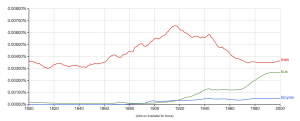Our final project.
Country Music Stars
Jojo Turano, Veronica Verstraten, and Jenna Corti.
Our final project.
Country Music Stars
Jojo Turano, Veronica Verstraten, and Jenna Corti.
In The Man with the Twisted Lip, by Sir Arthur Conan Doyle, Cannon Street is mentioned in the beginning of the story when Holmes is describing his new case to Watson. He describes Neville St. Clair to Watson and what his daily routine looks like. In the story, Holmes tells Watson, “He had no occupation, but was interested in several companies, and went into town as a rule in the morning, returning by the 5.14 from Cannon Street every night” (133). We all know how the story goes. After investigation, St. Clair is revealed to disguising himself as a beggar due to the simple fact that he made more money begging than any other job. St. Clair’s daily routine consisted of him returning home from Cannon Street. After doing some research about this street, this Sherlock Holmes story ties into the history of Cannon Street.
Cannon Street was a poor area of Victorian London. According to Charles Booth’s Poverty Map, Cannon Street is poor. This map also states that this area housed many 18-21 year olds. After researching Old Bailey Proceedings, I found that many crimes were related to burglary. In fact, there are 54 cases listed as theft. Cannon Street was also a road that lead to Cannon Street Station. An area that includes a major transportation station for a city could be very populated. This could also lead to increase in crime. The dominant young-aged civilians that lived on Cannon Street could also play a part in crime.
Cannon Street was originally called Candlewick Street. It was named this due to the candle makers who lived there. After them, it became home to drapers, who sell cloth and dry goods. The ancient Roman milestone, now the London Stone, also resides on Cannon Street in the church of St. Swithin. The legend of this stone says that it is so strong and rooted to the earth that even if a car were to hit into it, it would not move. The car would dent before the rock moved. During the Fire of London, the stone was half destroyed. There is now a new, less powerful, stone on top of the old stone to preserve the old stone. In 1866, the Railway Extension opened, creating a connection with Charing Cross and London Bridge. There is a signal box at the entrance of Cannon Street that extends across the entire bridge. There is also a hotel on Cannon Street which has visually appealing architecture.
Bibliography
My Google Fusion tables assignment is based off of 10 different dog breeds. I researched their origin locations and average weights to construct my visuals.
Here is my spreadsheet.

The map of where the dog breeds originate.

This is my bar graph. It is showing the relationship between breed and average weight (lbs).
My pie graph shows the amount of dog breeds in an origin location.

My network visualization connects the breeds to their location. In order to do this, I had to create another “location” column as a text based column. As you can see, Germany and the United Kingdom are the most popular origins.

Check out my WeVideo!
I started my research with the idea of transportation in mind. I hoped to type in words such as train, bicycle, and bus to see the decrease of bicycle and increase of train and bus. There was in fact an increase in all three, but there was something I found on a website that interested me more.

(Graph of bicycle, bus, and train)
The modern bicycles was invented in 1885. It started out as a trending activity and then died out to become a method of cheap transportation for working class men. Bicycle riding started the revolution of women clothing. This revolution began with bloomers. In order for women to ride bicycles, they needed to wear pants instead of a dress. A woman, Amelia Bloomer, suggested that women would find these pants more comfortable than the petticoats they were wearing. Her unpopular suggestion that was published in The Lily, a feminist publication, did not become popular until after her death. In 1895, some women were wearing the bloomers and they became acceptable to wear if a woman was cycling.
The Google Ngram shows the relationship between the popularity of bicycles, bloomers, and petticoats over time. From 1890 to about 1900, bicycle made a huge climb and bloomers were also on the rise. Around 1900, petticoats dropped a significant amount and continued to decline years after that. In 1930, bloomers was at its peak. When selecting English Fiction as the setting, the Ngraph looked very similar to the English setting. When I selected British English as the setting, I noticed that the petticoat graph fluctuated between 1892 and 1851 more than the English setting.
As bicycles became more popular, as a method of transportation, and a way of staying healthy, women were interested in riding them. Traditional petticoats were heavy, long, and unsuitable for a task such as cycling. It is not surprising that as the popularity of bicycling increased, so did the popularity of bloomers. At a time of women revolting from their current status, being disrespected and treated unequally to men, this graph is interesting because it take a spin on the evolution of women in a Victorian Society. Could bicycles be a leading cause of women wanting equality and breaking free of their petticoats?
Sources
http://www.schoolsliaison.org.uk/kids/aston/changingtimes/victorian/transport.htm
http://www.fashion-era.com/rational_dress.htm
I was on the verge of giving up while looking in the stacks of the SUNY New Paltz Sojourner Truth Library for marginalia. Then, I came across a book that appeared to be from the 18th century due to its leather spine with several cords binding it together. When I gently pulled the book out, I read that it was from 1855. The book was called, The Life and Letters of Sydney Smith. Nowell C. Smith had written the book after Sydney Smith died. This book is Volume 1, and I had seen Volume 2 on the shelf below it.
As I skimmed the delicate pages of the text, I thought this was going to be another unmarked book. However, near the end of the book, page 449 to be exact, I found two newspaper snippets. One was a full article that dated back to 1945. The article is from the Times Literary Supplement and the author writes about Sydney Smith and a new book that is called “The Smith of Smiths,” that will, apparently, better depict Sydney Smith’s life. The newspaper also had an illustration of Sydney Smith in the middle of the text.
The other snippet is what seems to be a reply from the author of The Life and Letters of Sydney Smith, N. C. Smith, to whomever wrote the newspaper article. His tone is defensive as he explains some of the reasons for his choices as a writer. N. C. Smith states that he, “regrets cutting down the index to save space.” I found this interesting because in our Digital Humanities class we are learning that it is important to have every piece of a book. References were also cut out of Nowell’s text to save space. The references from a given time period can play a key role in research and I am glad Smith had addressed his mistake.
The Times Literary Supplement still thrives today as the leading internationally forum of literary culture. This publication serves as the only literary weekly and has no competition. There are many reviews of literary works included in this journal.
After reading the page in which the article and snippet are found, it seems that the particular page have little to nothing to do with the article. The newspaper cut-outs were probably just shoved into a random area of the book.
Items
http://holmesiana.net/admin/items/show/132
http://holmesiana.net/admin/items/show/118
http://holmesiana.net/admin/items/show/88
Collection
http://holmesiana.net/admin/collections/show/14
Exhibit
http://holmesiana.net/exhibits/show/holmespoetry/aneveningwithholmes
After reading a handful of articles from the 19th Century Dictionary of Victorian London, one diary entry by Arthur Munby from April 1872 appealed to me the most. This blog post was interesting to me because I did not know that during the Victorian Age there were typically only male waiters. I found this insulting because I am a waitress where I live and I could not imagine being unable to work in a restaurant or “saloon” because of my gender. Munby describes his experience of his night at a large restaurant that advertises themselves as having a female wait staff rather than male. He wrote his thoughts upon entering the saloon, “A wholesome innovation, and we may as well see whether it is attended with good results’, as it should be.” This line made me infer that it was extremely uncommon to have women waitressing. Throughout the diary entry, Arthur explains the inappropriate actions a table of three older men were instilling on these females as they were serving them. I’m sure this kind of behavior still happens in restaurants today but it is rare. The disrespect these men were giving the women in the saloon may have been why they were there.”The girl, accustomed perhaps to such treatment, received his caresses with passive simpering acquiescence”, Arthur describes the way she responded to his actions. As I was reading, I thought about the possibility of the restaurant advertising their female staff to lure men in to eat and drink. Using women as a selling point to a restaurant is wrong. This article made me think of places like Hooters, where attractive women serve men wings and such as they make cat calls and flirtatious comments. I did not fully understand the inequality of women of the 19th Century until I read a few of the entries under the “Women” tab. Our society has grown since then and women are treated a lot more equally in the work force.

Hi everyone! I’m Jenna Corti and I’m a freshman. I love to draw, snowboard, mountain bike, hike, and explore new places. I am a graphic design major and you should all check out my art tumblr. I can’t wait to get to know all of you this semester!